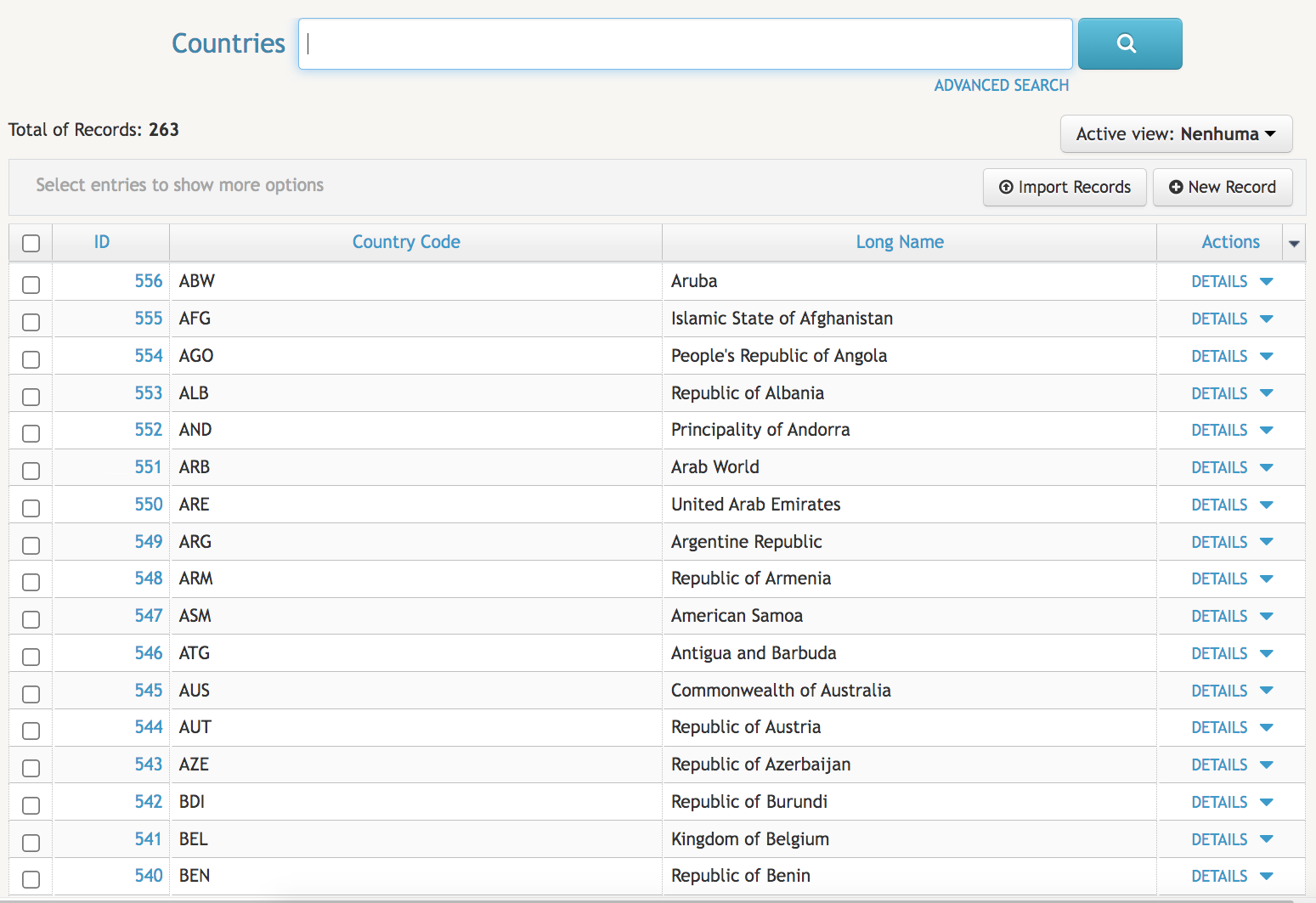# Demo Solution
To be able to explore in detail an example of the potential of the CoB platform, we needed data that met three criteria:
- It should involve large amounts;
- Should be publicly accessible;
- Should be easily understandable to a wide audience.
The World Data (opens new window) web site provides free geographic, demographic, and financial information on countries from all continents. Given the generic and open nature of the data provided by this site, we decided to rely on this data to develop a solution that would explain how it is possible to manage and visualize data with characteristics similar to those mentioned above with the help of the CoB platform.
When accessing World Data we can only browse the data. The site does not provide any possibility for collaboration, adding new indicators, problem detection, listing configuration, and many other features. In the example we have developed, we have tried to address some of these data maintenance issues while having in mind the characteristics of our platform.
The data used in our example solution includes:
- Information on 200 countries for the years between 2014 and 2018.
- Four indicators:
- Surface area (in square kilometers);
- Total population;
- Gross Domestic Product (GDP): aggregate series (in current local monetary units);
- Nuclear and alternative energies (as a percentage of the total amount of energy consumed).
The example solution adopted here is made of two large data entities. The first, Countries, is intended to group the data for each of the countries as a piece of information:

Each data entry includes generic information about the country in question, including abbreviated name, short name, and long name, as well as indicators for each of the five years taken from the World Data database.

Country Series, the second large data entity, contains the total raw data imported from World Data without being grouped by country:

As you can see from the images, what a CoB solution can do is help your business extract value from inert data waiting to be cross-referenced against each other. This is done by linking different data entities together and creating aggregate entities for data obtained from both internal and external sources.
